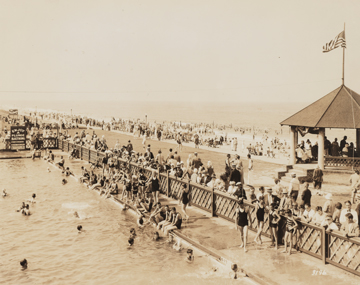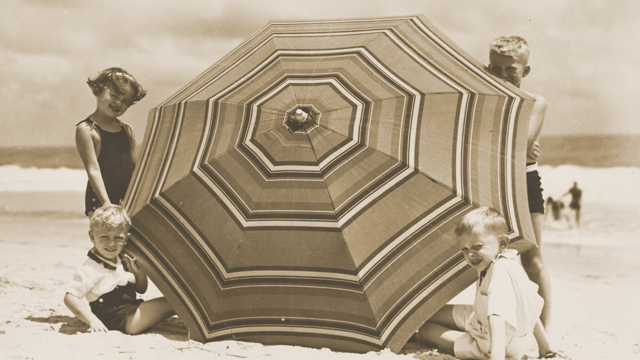The resort area of Virginia Beach became an incorporated town in 1906, but travelers had gravitated to the beach since electrification and rail service arrived in the late 1880s. In 1887, developers built the Princess Anne Hotel, an oceanfront property meant to capitalize on the growing number of vacationers. In 1922, road access improved with the construction of Virginia Beach Boulevard, which was meant to link Norfolk and Princess Anne County to the oceanfront. Suddenly, families could access Virginia Beach with automobiles and buses, as opposed to relying exclusively on rail service.
 In the first four decades of the twentieth century, vacationers increasingly saw the town as a family-friendly and seasonal destination, where they could frequent the new amusement parks and stroll along the boardwalk with their children.
In the first four decades of the twentieth century, vacationers increasingly saw the town as a family-friendly and seasonal destination, where they could frequent the new amusement parks and stroll along the boardwalk with their children.
As with most public areas across the South, Virginia Beach’s oceanfront areas remained segregated until the 1960s, driving Black business owners to advocate for their own beach-front spaces. By far the most popular beach for wealthy Black vacationers was Seaview Beach and Amusement Park, which opened in 1945 and was named Virginia’s Best-Known Negro Resort in 1947 by LIFE magazine. The resort hosted nationally recognized entertainers, such as Ella Fitzgerald, Louis Armstrong, and Dizzy Gillespie, as well as local performers. Seaview closed in 1965, as the once white-only Virginia Beach resorts and amusement parks began to allow Black vacationers.
The Virginia Beach Boardwalk as we know it today did not start out as a full-fledged amusement center; instead, it grew over a century. The first iteration of the beach-front walkway was created as an amenity to the Princess Anne Hotel in the 1880s and was only a few blocks long. As more and more businesses like the Virginia Beach Casino (later Seaside Park) emerged, the boardwalk needed to keep up. By 1928, construction began to expand the oceanfront walkway to two miles long. Along this expanded boardwalk, attractions like Seaside Park offered a second way to beat the Virginia Beach heat with outdoor saltwater swimming pools adjacent to the ocean. Businesses provided visitors plenty of options for indoor and outdoor dining, arcades, and dance halls. The explosive growth continued after World War II, and the four permanent military installations in the region meant a dramatic rise in year-round residents.
What began as a small boardwalk of wooden planks in the 1920s eventually became the three-mile-long recreational area where pedestrians and bicyclists alike can take in the oceanfront views and enjoy the salty ocean breeze. Today, Virginia Beach boasts a listing in the Guinness Book of World Records as home to the longest pleasure beach in the world, welcomes about 19 million visitors, and makes more than 300 million tourism dollars annually.

Photos: courtesy Virginia Museum of History & Culture




